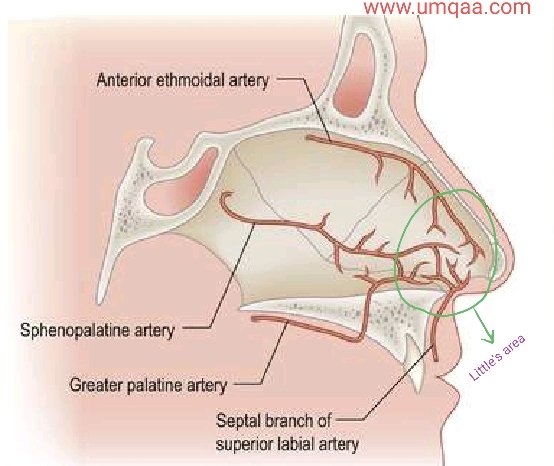Epistaxis/Nose bleeding
Nose bleeding, which in the medical field known as epistaxis, is quite common as well as frightening symptom among the general population. In most of the cases, nose bleeding is a minor symptom and bleeding stops with minimal effort. However, sometimes its severity may impose a threat to the victim’s life.
Why does the nose bleed?
The nose can bleed due to local or general causes:
Local causes are:
- Idiopathic: Means exact reason can’t be found out
- Trauma or injury to the nasal passage by a foreign body or nasal fracture or nose-picking
- Following nasal surgery, if the bleeding point is not cauterised properly
- Application of intranasal steroid medications may lead to epistaxis
- Bleeding from the nose may be the feature of tumours in and around the nose (e.g. nasal, paranasal and nasopharyngeal tumours)
General causes are:
- Some medications may contribute to bleeding from the nose. Such as anticoagulants (warfarin) and antiplatelet agents (aspirin). These are known as blood thinners.
- Severe hypertension or very high blood pressure
- Coagulation disorders: Where blood fails to clot due to deficiency of some of the components required for coagulation. In layman terms, if a cut injury happens, blood doesn't stop. It keeps flowing out or oozing out from the site of injury.
- Bleeding from the nose may be found commonly in some families, hence it is also a familial condition. E.g. Osler-Weber-Rendu syndrome. If parents have such a condition, children may have too.
A bleeding point inside of the nose:
There is an area known as Little’s area on the front part of the nasal septum (each side) where 4 blood vessels meet. This is the most vulnerable place for injury due to nose picking or any other kinds of trauma.
Picture showing Little's areas (on each side of nasal septum) where 4 blood vessels meetWhat is the management of a bleeding nose?
As I mentioned earlier, the bleeding may be a minor incidence and there is no need to be panicked. Simple first aid at home in most cases sufficient enough to stop the bleeding. However, to find out the cause, a patient should visit a doctor.
Immediate first aid steps are:
- Applying digital pressure (with fingers) on the lower part (soft part) of the nose
- Putting an ice pack on the nose
- Leaning forward
- Asking the patient to avoid swallowing any blood running backwards of his/her nose, as this may cause nausea/vomiting
If (and when) first aids fail to stop the bleeding:
If the bleeding is not stopped, continue following the above steps, and go to the emergency department. If bleeding occurs recurrently, you also should visit the emergency department where surgical procedures will be done to stop the bleeding. If the bleeding is profuse, resuscitation in the form of intravenous access, fluid replacement or blood transfusion, and oxygen can be administered. There are various surgical approaches to stop a bleeding nose. The surgeon will decide which one is the best option for which patient.
Reference: (including images)
- Kumar and Clark’s Clinical medicine 1318(3231)





0 Comments